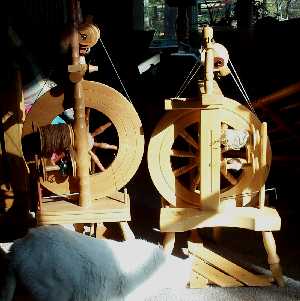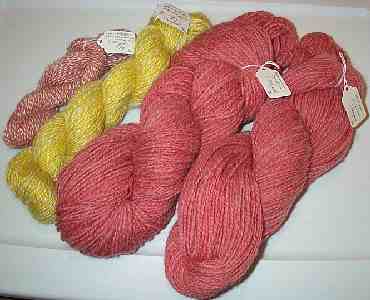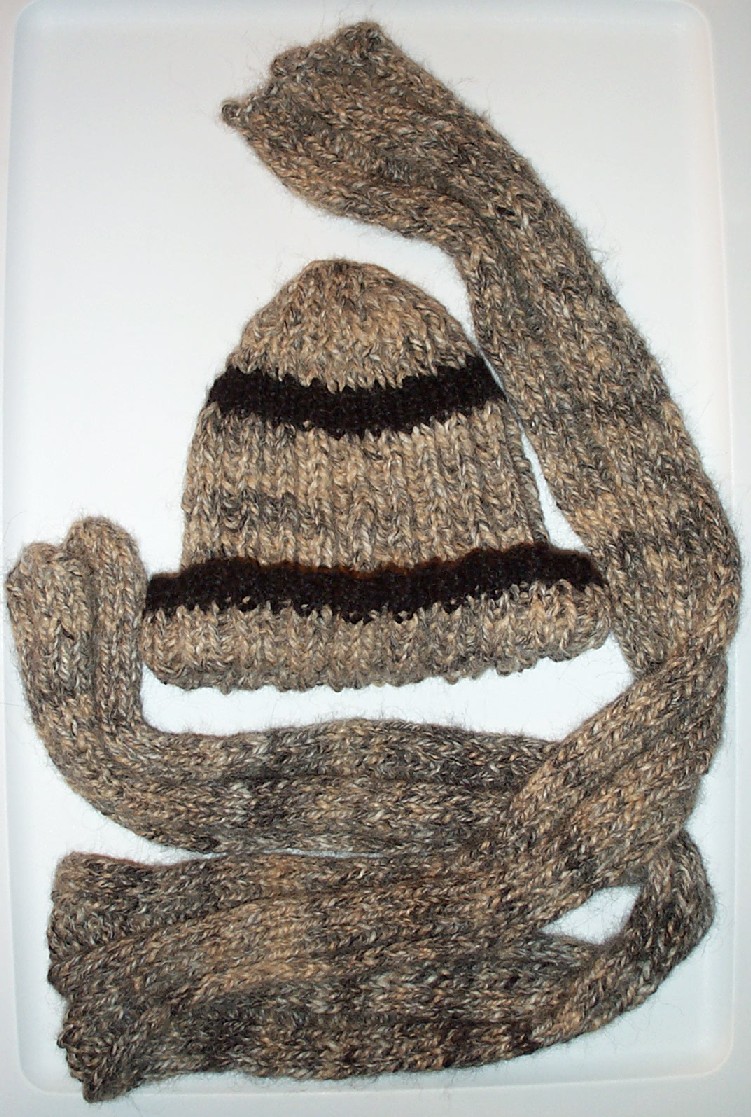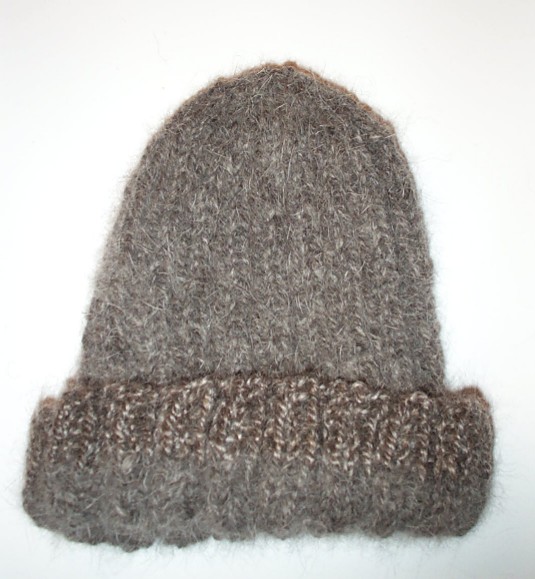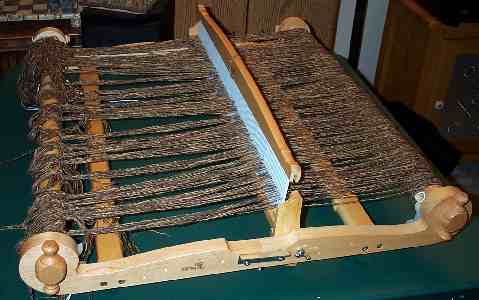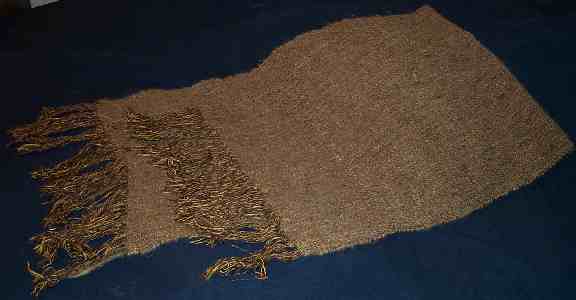|

|
This is the second triangle shawl I ever attempted, and it was another
learning experience. Because I didn't have a yarn ball winder at the
time, I hung the skeins off of a portable ironing stand (against the wall
on the right). I used a foot-long crochet hook to do the
weaving.
I don't always use my own handspun yarn for projects. This shawl
was made from commercially produced brushed mohair that was hand-dyed by
Spirit Trail Fiberworks.
|
| Take my advice, and never make a triangle shawl
from brushed mohair. The haloed fibers stuck to each other, and the
shed had to be separated at every single pass. Not only did that
separation process stretch the yarn, but it also slowed me down.
This shawl took almost fourteen hours to finish.
I have to say, however, that the finished product was quite pleasing to
both the eye and the hands. This photo is from before it was
washed. Washing it made the fibers even more haloed and even softer,
if such a thing is possible.
I use this shawl to demonstrate the properties of mohair when I go to
local festivals. People are very surprised at how lightweight it
is. The entire shawl weighs less than 6 ounces, and is as warm as it
is light. |
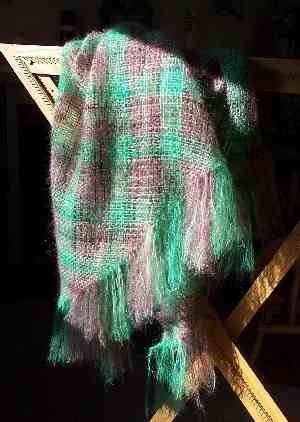
|
|
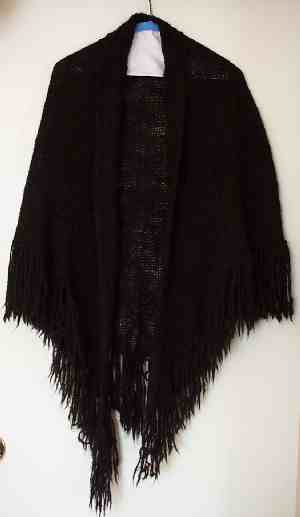
|
Here is my third triangle shawl. It is made of 2-ply
handspun naturally black alpaca. The alpaca fiber was purchased from
Morning Moon Alpacas, and
the name of the specific alpaca who provided the fleece is Black Streaker.
I had some difficulty with the fringe because I had overspun the yarn
somewhat on the 2-ply stage. The fringe had a tendency to fall apart
and also to felt together when washed. I do think it is a most
elegant shawl, however, and wear it to work on
occasions. |
